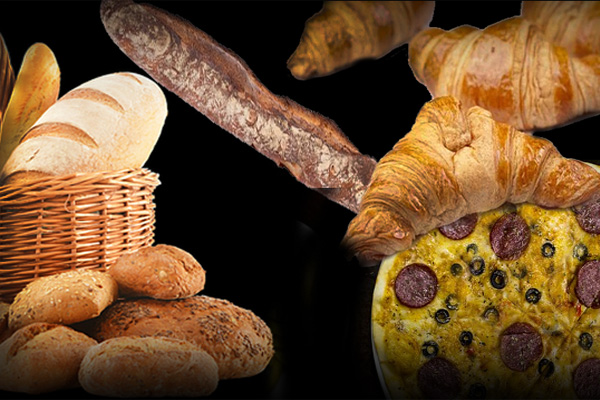Breads & Related
Great homemade breads
Bread Making Tips
In the first place, the quality of the ingredients for bread making should be carefully considered, because on this depends the quality of the finished product. No one who prepares homemade bread can expect good bread to result from the use of inferior materials.
The proportion of the ingredients for bread making demands full attention, for much importance is attached to this point. For instance, in making a certain kind of bread, the quantity of flour to be used is regulated by the quantity of bread that is desired, and the quantity of flour governs, in turn, the quantities of liquid, leavening, and other ingredients that are to be put into the mixture.
The ingredients that are actually required in the making of breads are flour, liquid, salt, and leavening, and to give variety to breads of this kind, numerous other materials, including sugar, fat, eggs, fruit, nuts, etc., are often added. With the exception of leavening agents, none of these ingredients requires special attention at present; however, for the best results, all the materials for breads should be of the best quality that can be obtained.
When the proportions of ingredients required for a bread are known, it is necessary that all ingredients are measured very accurately.
Leavening material, for example, will serve to make clear the need for accuracy in measuring. A definite quantity of leavening will do only a definite amount of work. Therefore, if too little or too much is used, unsatisfactory results may be expected; and, as with this ingredient, so it is with all the materials used for breads.
The handling of the ingredients and the mixture has also much influence on the success with which breads are produced. It is very important to follow instructions from the recipe properly.
In preparing hot breads, a heavy touch and excessive handling, are more likely to result in a unsatisfactory product. A good rule to follow in this particular, and one that has few exceptions, is to handle and stir the ingredients only enough to blend them properly. In addition to the handling just mentioned, the utensils in which to combine the hot-bread materials and bake the batters or doughs are also important. While none of these is complicated, each must be of the right kind if the best results are expected.
The final point to which attention must be given is the baking of breads. Proper baking requires familiarity with the oven that is to be used, accuracy in judging temperature and baking time, and a knowledge of the principles underlying the process of baking.
However, as with all other skills, the skill in this matter comes with practice, so no discouragement need result if successful results are not satisfactory at the very beginning. Just remember that old saying "practice makes perfect" and keep practicing.
Browse Recipes:

Appetizers
Surprise your taste buds with great flavours ...Did You Know?
Nutrients provided by grain products include carbohydrates, B vitamins, iron, zinc, magnesium as well as fibre (particularly in whole grains). A diet rich in in whole grains may also help reduce the risk of cardiovascular disease.
When buying bread, cereals and pasta made from whole grains you should always look at the ingredient list rather than the color of a food. When you choose whole grain foods, the first ingredient listed should be whole wheat, whole rye, whole oats, brown rice, wild rice, barley, bulgur, or oats.
Arthritis is associated with more than hundred types of disorders. It is characterized by joint inflammation, stiffness, swelling and pain. Anti-inflammatory foods may help ease the pain and stiffness. Cut down on foods containing animal fats and eat plenty of fish. Also try to enjoy fresh green and yellow vegetables and food high in vitamin C. We also recommend diet high in fibre like whole grains and nuts and other high-fibre low calorie food to help control weight.
To counter the effects of hypertension (high blood pressure), eat plenty of fresh vegetables, fresh fruits, legumes, low in fat and high-fibre foods. Cut down on: smoked meat, processed meat, canned and processed foods, added salt and fatty foods.

